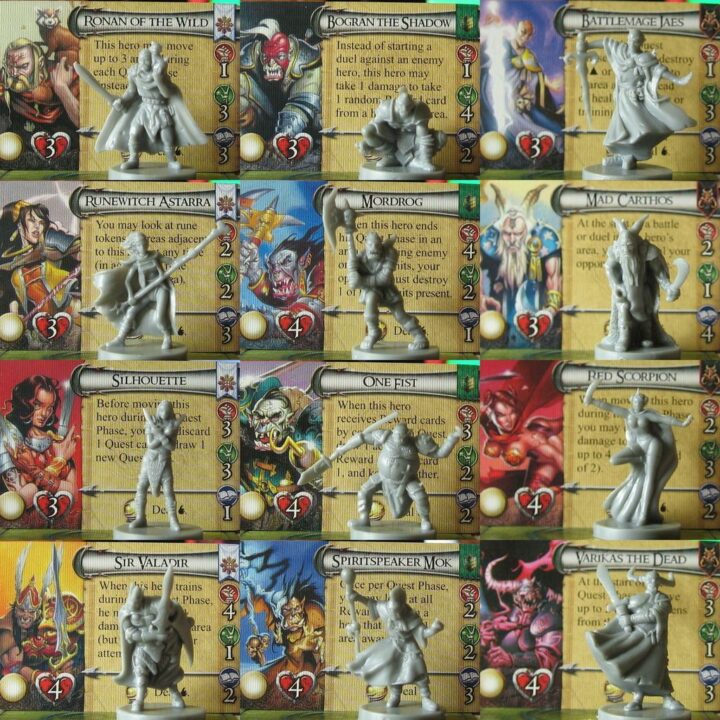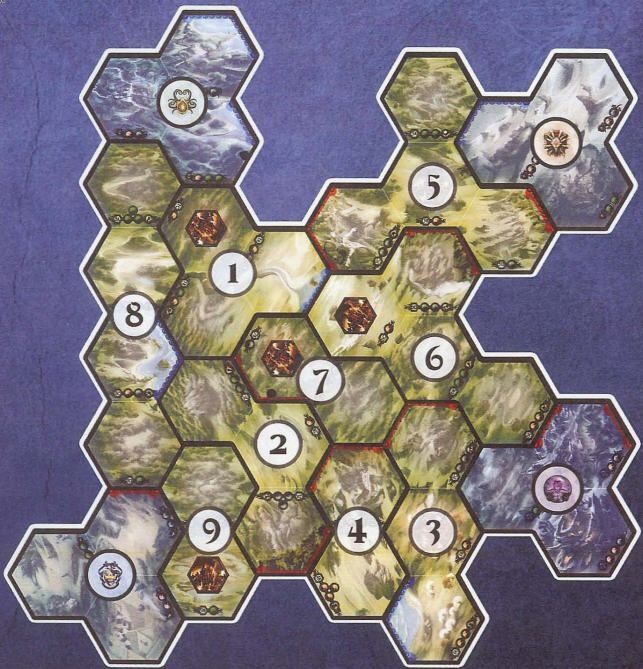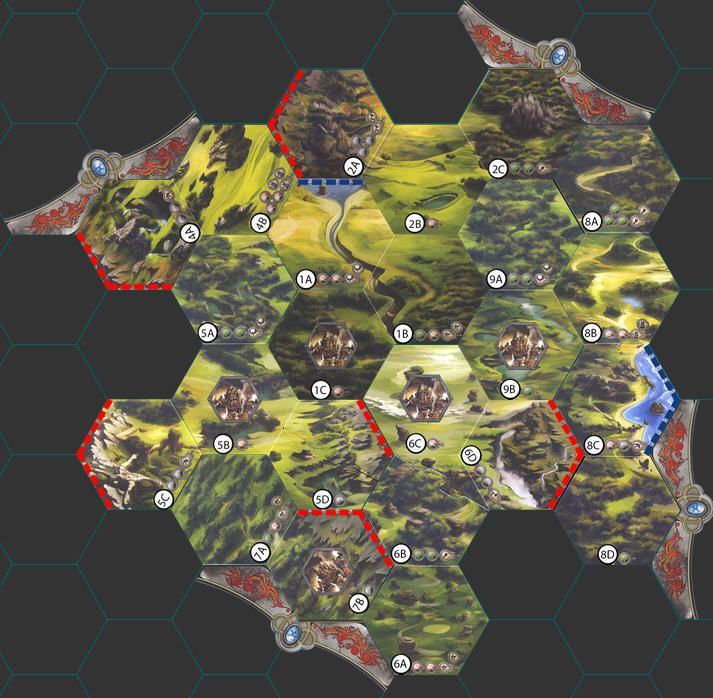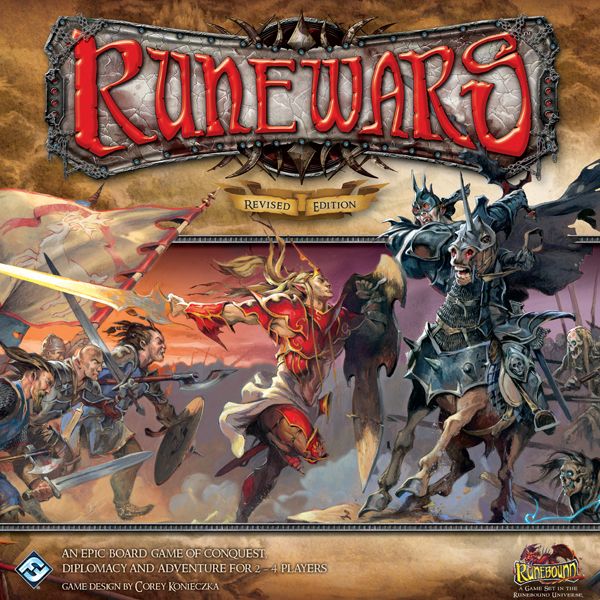Overview
Welcome to my board gaming table where pieces become heroes and tables turn into fierce battlefields. Today, we delve into the epic strategy game Runewars. This review will unearth the mechanics of this fantastical conquest, highlighting how its strategic resource management, asymmetric faction gameplay, and the vital role of player interaction and diplomacy contribute to its standing as a stalwart member of the strategy board game genre. Buckle up for an adventure in tactical supremacy as we raise the banners of our fantasy armies. Let’s discover if the chalice of victory lies amidst the rolling dies or through the cunning talks of proposed alliances!
How It Plays
Runewars emerges as an enthralling blend of strategy, fantasy warfare, and territory control, putting players at the helm of their unique factions thirsting for domination. But understanding the ebb and flow of the game is essential to emerge victorious on this battlefield. Let’s delve into the core aspects: setting up, gameplay, and how one reigns supreme.
Setting up
To start, each player selects a faction, places their starting units on their home realms, and strategically distributes their remaining forces and outposts. Resource, objective, and upgrade cards are set within reach, along with a multitude of tokens for order, supply, influence, and the inevitable skirmishes.
Gameplay
Gameplay in Runewars is a dance of decisions, with players issuing secret orders which are revealed in an I-cut-you-choose manner. Recruiting armies, moving across the diverse landscapes, managing your resource areas, engaging in dramatic battles, and leveraging unique faction abilities unveils throughout the seasons of the in-game year, where winter means reassessment and planning ahead.
Winning the game
The podium for victory on Runewars is for the shrewd tactician. The game ends after a set number of years when the player who has gained the most dominance while achieving set objectives claims the throne to the ancient dragon runes scattered across the terrain.
Want to know more? Read our extensive strategy guide for Runewars.
Clever Mastery of Vital Resources
In the realm of board gaming, Strategic Resource Management forms the crux of countless victorious strategies. This crucial gameplay facet demands players forecast their needs, evaluating every shift on the board with perspicuity. At no time should this balancing act be taken lightly, for it could mean the difference between conquering the land or fading into obscurity.
Planning Ahead with Precision
Runewars, the epic board game of conquest, amps up the cerebral challenge when it reminds players that laying long-term plans is indispensable. Moreover, while securing immediate territories might seem seductive, one must ponder future ramifications. Keen gamers systematically plot their resource acquisition, evading the traps of scarcity that can cripple an empire’s climb to domination. Indeed, forethought is critical in this rigorous test of strategy.
Adaptable Tactics
Transition words Furthermore, adaptation serves as the backbone to efficient resource management. Players who swiftly realign their strategies when confronted with unexpected adversaries’ maneuvers maintain a dynamic approach. This fluid game model keeps opponents guessing and tilts the scales of fortune in your favor. Each collection round ebbs and flows with immense anticipation while in Runewars, as players vying for resources experience palpable tension.
Transitioning from the cutthroat competition of resources, the spotlight now shifts to dissecting Asymmetric Faction Gameplay—a captivating foray into gaming diversity.

Dive into the Asymmetry of Runewars
In a board game landscape brimming with mirrored factions and uniform capabilities, Runewars breaks the mold by offering players a dynamic asymmetrical experience. Indeed, one of the most engaging points I discuss in the Runewars Review is how the distinct characteristics of each faction not only demand unique strategic approaches but further render every game session a fresh adventure. But, let’s dissect this a bit.
Conquer With Diversity
From the resilient human Daqan Lords to the macabre forces of the undead Waiqar, each faction boasts exclusive units, talents, and economic needs. In turn, no single strategy reigns supreme. Initially, this could be a source of intimidation for newcomers striving to find their footing amidst these divergent powers. However, it’s this diversity that encapsulates Runewars’ charm – the learning curve is steep yet satisfying, as mastery of each faction feels like a personal triumph.
Strategic Immersion Through Variety
Moreover, this variability keeps the game exceedingly replayable; players return to the battlefield nearly as novices, with each switch of sides presenting new angles to tackle challenges. Through such replayability, extra dimensions emerge, pushed by the asymmetric designs. Each session, players make complex decisions that color their narratives with thick strokes of strategic gameplay. And as that canvas dries, we find our gaze invariably shifting toward the crucial aspect of Player Interaction and Diplomacy.

The Diplomatic Heart of Runewars
In any Runewars review, we must delve into the second-to-none player interaction and diplomacy inherent in the game’s design. Collaboration is constantly tested, as forging alliances can be as critical as commanding an army effectively. Scheming Alliances attendees are pushed to negotiate with sharpened wits. Every offered armistice or proposed pact holds significance; trust becomes a fragile commodity quickly spent. Such treaties are tempered by the knowledge that resources are finite and everyone eventually vies for dominance.
Active Engagement comes thanks to direct player engagement. Battle lines frequently redrawn and all players must adapt, with an understanding that betrayals and unexpected collaborations are par for the course. Harnessing these moments appropriately ensures not just survival but a chance at victory.
This level of interaction guarantees that no two playthroughs of Runewars are ever the same. If you believe board gaming is elevated by a persistent tension between cooperation and competition, and appreciate a careful blend of timely alliance-making with strategic backstabs, then Runewars should be a staple in your game collection.

Conclusion
In looking at the strategic intricacies of resource management, the fascinating asymmetry of faction gameplay, and the essential role of player interaction and diplomacy within Runewars, it becomes evident that this game is steeped in depth and replayability. It’s a hefty mix of strategizing and socializing that could very well steal the show on game night. Whether you’re maneuvering legions across the fantasy landscapes or negotiating precarious alliances, you’ll find that Runewars expertly intertwines mechanics with player dynamics, creating a board gaming experience that is as engaging as it is demanding. And so, as we reach the end of this Runewars review, if mastering a rich, strategic landscape and bending the unpredictable wills of fellow players are what you seek, then Runewars might just be the treasure trove you’ve been searching for.


